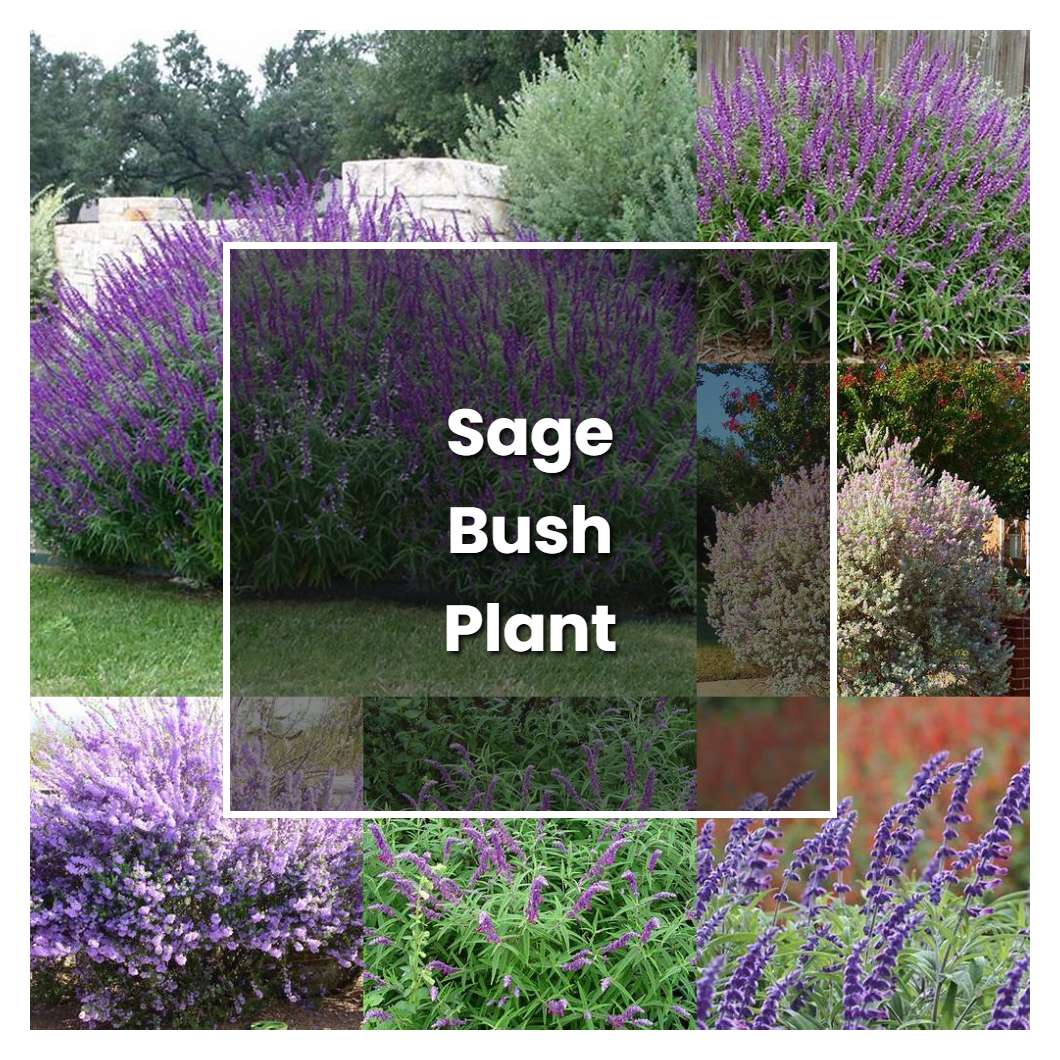Sage bush is an evergreen shrub that is native to the Mediterranean region. It has been used for centuries in cooking and as a medicinal herb. Sage has a pungent, earthy flavor and is often used in stuffing and sage-flavored dishes.

Related plant:
Texas Sage Bush
Related plant:
Green Cloud Texas Sage
About soil condition, the soil should be well-drained and sandy to gritty. It is best to plant sage in the early spring or fall. The plant does not like to be moved, so it is best to plant it in its permanent location.
Similar to other types of plants, sage bushes need sun to grow and stay healthy. The amount of sun each plant needs can vary, but most sage bushes prefer at least six hours of direct sunlight each day. If you live in an area with hot summers, it's best to plant your sage bush in a spot that gets some afternoon shade. This will help protect the plant from too much heat and prevent the leaves from scorching.
The temperature of the air around a sage bush can have an effect on the growth and health of the plant. In areas that are too hot, the sage bush may not receive enough water and this can cause the plant to wilt and eventually die. Conversely, in areas that are too cold, the sage bush may become dormant and stop growing altogether. The ideal temperature for a sage bush is between 65 and 75 degrees Fahrenheit.
Ideal humidity condition for this plant is 35-65%. The plant can tolerate lower humidity for short periods of time, but if the humidity drops too low for too long, the plant will start to experience stress. The leaves will become crispy and begin to drop off. If the humidity is too high, the plant will be more susceptible to fungal diseases.
For the fertilizer, this family of plant recommends using a balanced 10-10-10 fertilizer. The roots of the sage bush are relatively shallow, so make sure not to cover them too deeply when planting. Be sure to keep the area around the sage bush free of weeds and other plants, as they can compete for water and nutrients.
Pruning your sage bush is an important part of keeping it healthy and looking its best. It is best to prune in early spring, before new growth begins. You can also prune in late summer or early fall, but be sure to do it before the first frost. To prune your sage bush, start by cutting off any dead or diseased branches. Then, trim back any branches that are growing too long or too close together. Finally, shape the bush by trimming away any stray branches.
Propagation is typically done by seed, although cuttings from young plants can also be used. Sow seed in a well-drained seed-starting mix in spring, pressing it lightly into the mix. It typically takes four to six weeks for the seed to germinate. Once the seedlings emerge, thin them to the strongest plant.
Usually, the plant growth rate is considered slow to moderate. However, there are a few species that have been found to be rather fast growers. These include the Purple Sage (Salvia dorrii), Mealycup Sage (Salvia farinacea), and Chia Sage (Salvia columbariae). In general, sage grows best in full sun and dry to moderate soil moisture conditions. Once established, sage is quite drought tolerant.
Common problems for this kind of plant are pests, diseases, and cultural problems. Pests include aphids, slugs, and whiteflies. Diseases include botrytis, rust, and wilt. Cultural problems include poor drainage, compacted soil, and too much water.
Source:
Sage, Salvia officinalis Wisconsin Horticulture
Artemisia ludoviciana (Western Mugwort, White Sage, White Sagebrush ...
Ecological Systems: Sagebrush Shrublands - CNHP Blog
